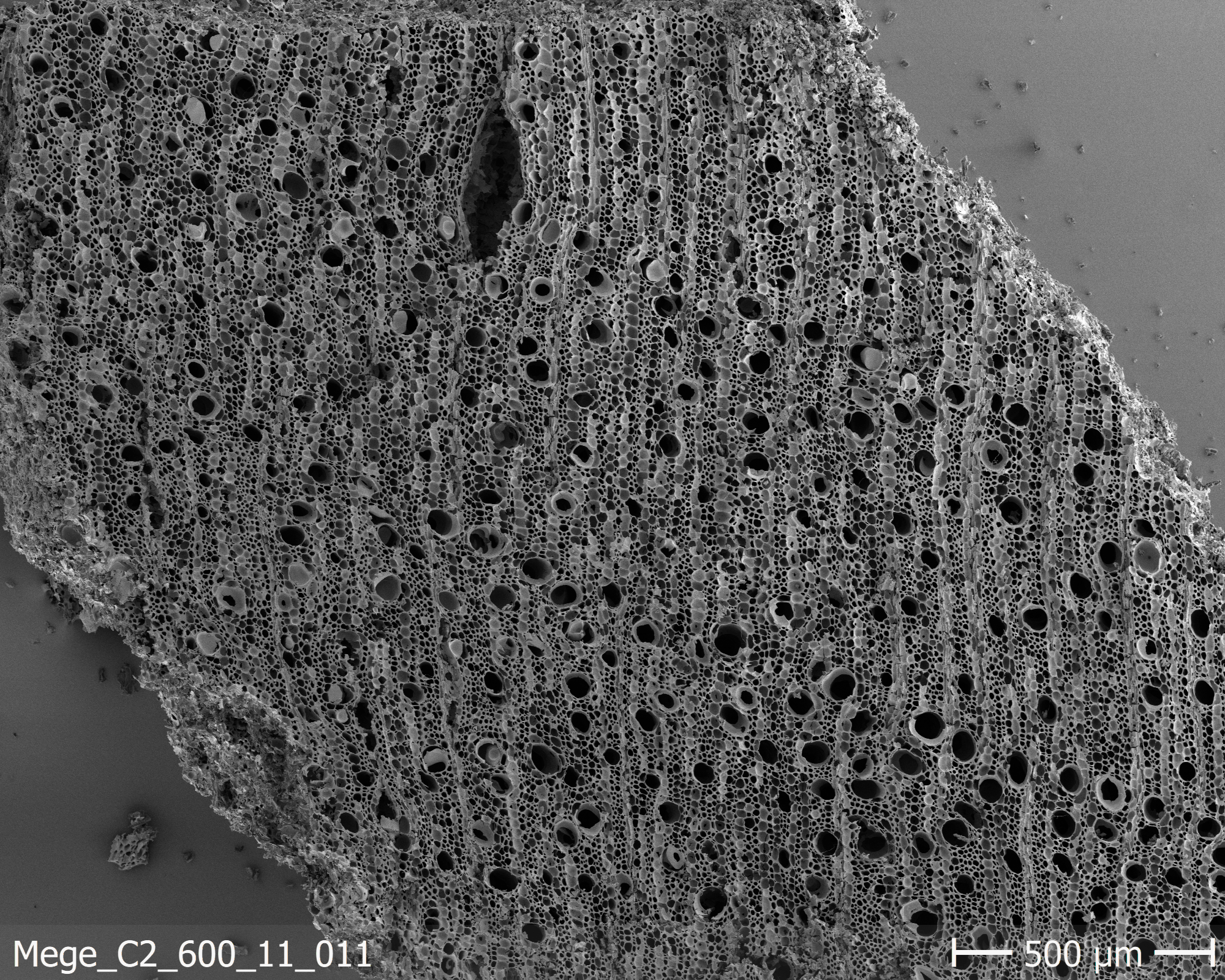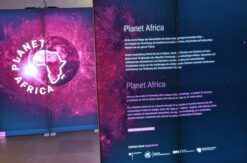Scanning electronic image of an archaeological charcoal in the transverse fracture [Attribution: Alexa Höhn; Copyright: Alexa Höhn].
Making archaeological charcoal visible
Wood has been an important raw material since prehistoric times: digging sticks, spears and tool handles, shelters and roof constructions, spoons, bowls and furniture, but also sculptures and gaming figures, are just a few examples for objects that have been made of wood – and still are. And, wood is important as fuel – for cooking and heating. Within archaeological sites, wood remains provide information about the specific use of this resource, but it is precisely the remains that have found their way into settlements on a daily basis, as firewood, that provide valuable information about the environment and how it has been changed by climate and human impact. By tree-ring analysis and through radiocarbon dating, wood remains also contribute to the chronological classification of finds and sites.



Scanning electron microscopy makes it possible to take accurately focused photos of charcoal in a way that is hardly possible with a light microscope: The surfaces of the charcoal fragments are uneven, thus clear images rarely succeed due to the shallow depth of field. Even “focus stacking”, the digital compilation of photos from different levels of focus, does not always produce satisfactory results with charcoal fragments. Due to its great depth of field and higher resolution, the scanning electron microscope (SEM) allows the best documentation of archaeological charcoal fragments. These SEM images are part of most charcoal analytical publications, but space in printed publications is limited, even if online files are supported as supplements in journals. Thus, the selection is limited to the most beautiful and important images, while atypical or poorly preserved fragments are rarely illustrated.
However, the visibility of the analytical results based on these determinations, i.e. the counted proportions of charcoal fragments in the respective samples, also needs to be improved. A first step is the current input of anthracological results into the “Sahel-Sudan-Archaeobotany Database” in ArboDat 2018© (Lower Saxony Institute for Historical Coastal Research, Wilhelmshaven). The cross-cutting analysis of data from different sites in West Africa is simplified many times over by the availability of the results within a single database.







27. January 2022
[…] data are being collected and harmonized for feed into Noetoma and ArboDat 2018 in the WG “Data collection natural sciences“. For analysis of data in SPP and Working Groups, the WG “Network Analysis” […]